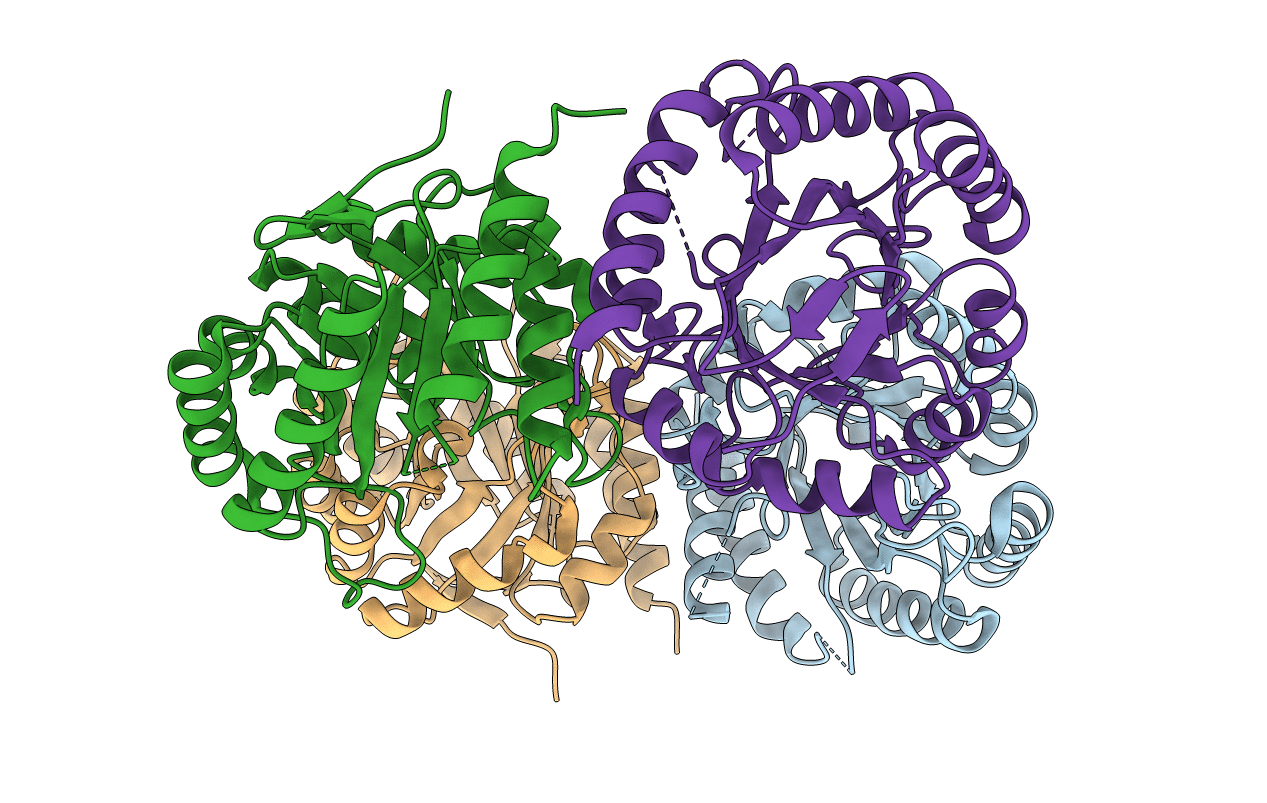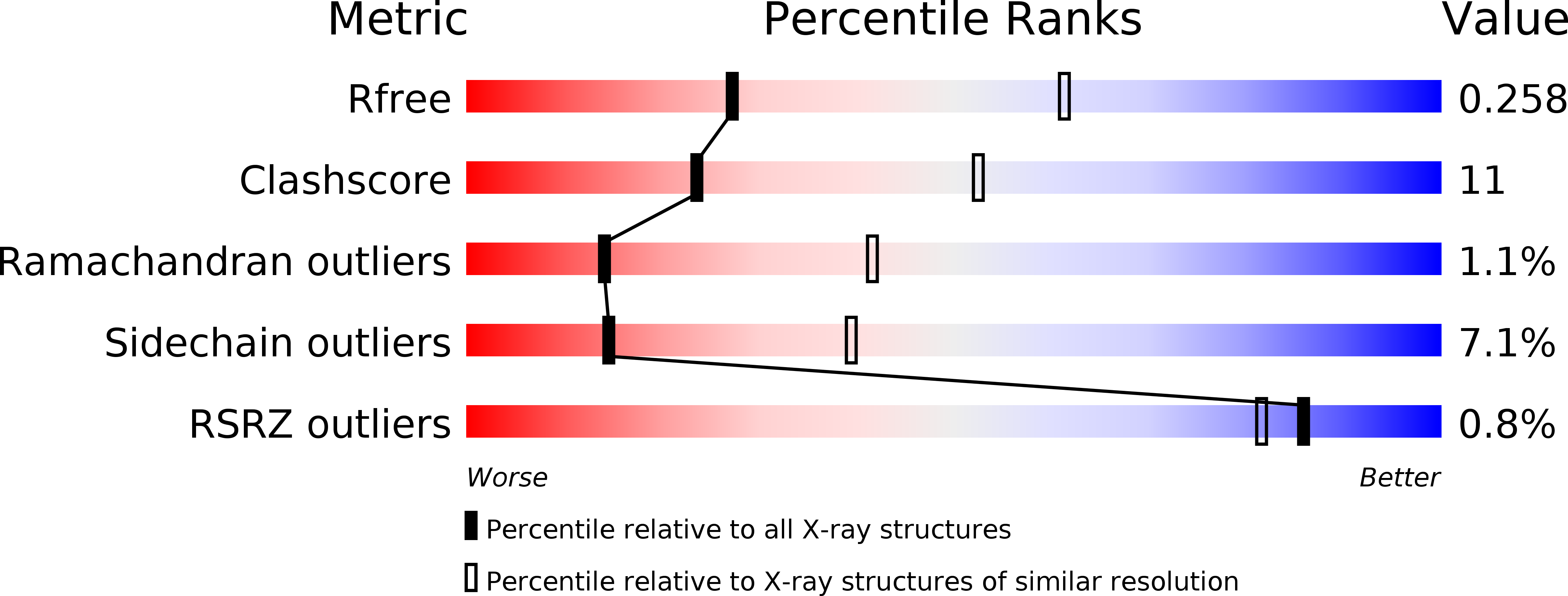
Deposition Date
2013-07-24
Release Date
2013-10-09
Last Version Date
2023-09-20
Entry Detail
PDB ID:
4LU0
Keywords:
Title:
Crystal structure of 2-Keto-3-deoxy-D-manno-octulosonate-8-phosphate synthase from Pseudomonas aeruginosa.
Biological Source:
Source Organism:
Pseudomonas aeruginosa (Taxon ID: 208964)
Host Organism:
Method Details:
Experimental Method:
Resolution:
2.80 Å
R-Value Free:
0.26
R-Value Work:
0.20
R-Value Observed:
0.20
Space Group:
P 21 21 21


